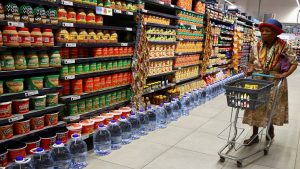Figures released by Statistics South Africa indicate that transport costs were the most significant contributor to the consumer inflation number in August. This was on the back of higher fuel prices.
Stats SA says overall CPI decreased slightly to 3.1% in August.
Independent Economist, Elize Kruger, says further interest rate cuts by the Reserve Bank will not ignite the economy.
“For next year we expect the inflation cycle to render an average of about 4.1%, although overall the numbers will remain below the midpoint of the target band. From that perspective one could argue that the Reserve bank does have space to cut the rates further, however having already cut the rates by 300bp, a further 50bp cut could not really be seen as the needed factor to ignite our economy that’s in recession.”
#CPI inflation was 3,1% in August 2020, slightly down from 3,2% in July 2020. CPI increased by 0,2% m/m in August 2020
Listen here for more: https://t.co/m9sEsdTEMS#StatsSA #inflation pic.twitter.com/4vqxgy9Btu
— Stats SA (@StatsSA) September 30, 2020
Meanwhile, Stats SA says 2.2 million jobs were lost in South Africa in the second quarter of 2020. It has released the unemployment figures for the second quarter, announcing that the unemployment rate decreased to 23.3% from 30.1% in the first quarter.
There were 4.2 million people unemployed in the second quarter, compared with 7.1 million unemployed people in the first quarter. Stats SA says the reason for the decline in the unemployment rate, is that fewer people were actively looking for work during alert stages five and four of the lockdown. People who were not looking for work were not classified as unemployed.
Statistician-General Risenga Maluleke says the decrease is not surprising.
“All over the world, we have seen a decline in the number of those who are employed as well as the number of those who are unemployed because when countries issued that lockdowns at different stages people could not actively look for employment, only the US and Canada showed increases in those that are employed and those that are unemployed, but otherwise the phenomenon is all over the world.”
The largest increase in unemployment was recorded in the Northern Cape, followed by the Eastern Cape.






